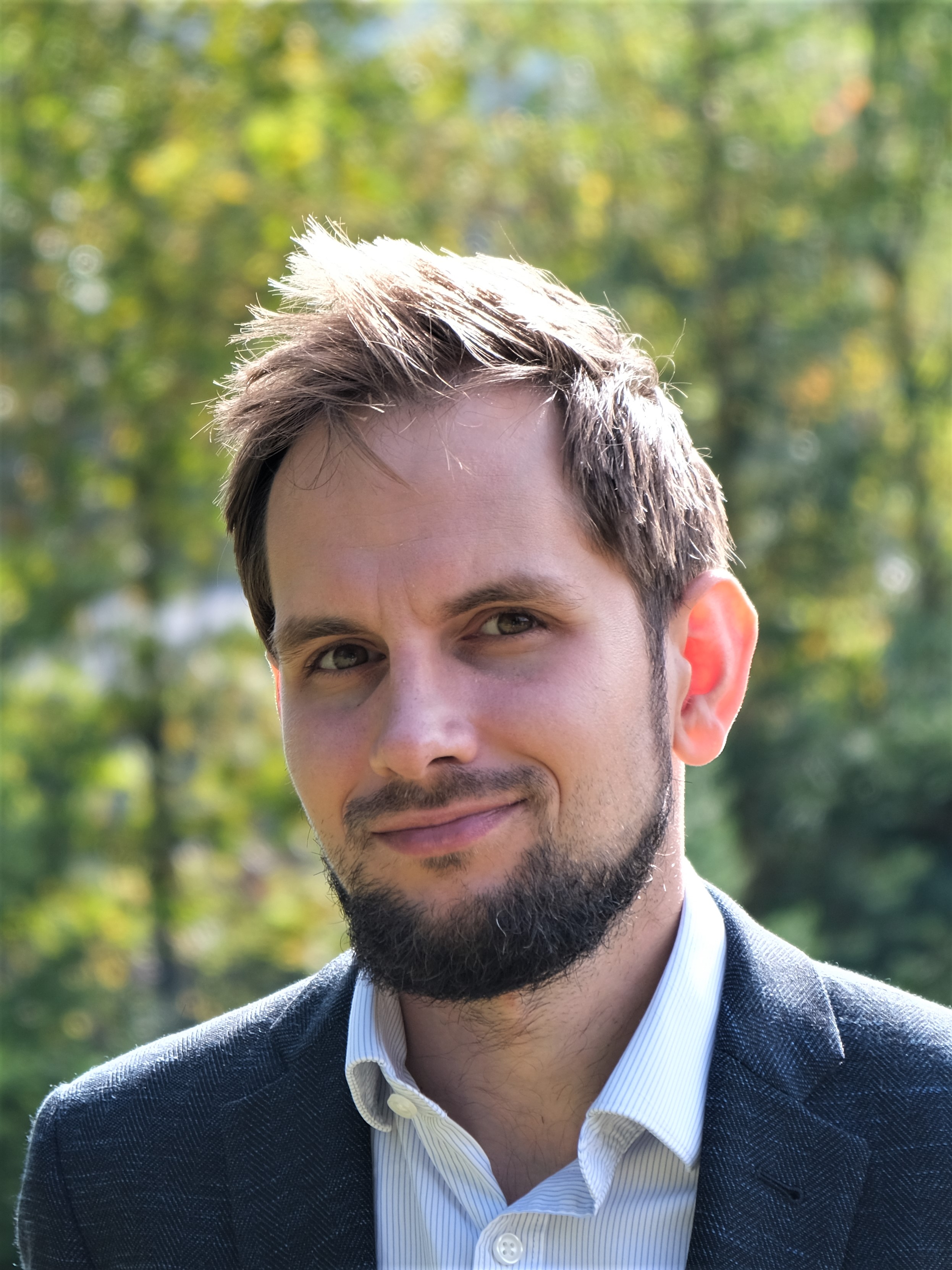Ondrej Dvorak
October 17, 2020
Ondrej Dvorak
October 17, 2020

Often in a rush, juggling constantly changing priorities, drowning in emails, calls and messages, and keeping track of all the activities of his law firm with all his might. Yes – this was a typical day in the life of Štěpán Holub, an internationally ranked lawyer, shareholder and managing partner of Holubová Advokáti (hereinafter “Holubová”).
One day, while chatting about his struggles, he mentioned several ideas to optimize the operations of his office. When asked what he would want to improve upon, Štěpán said, “Daily stand up meetings and maybe a whiteboard to track critical activities – that’s what we need.” However, he followed up that remark with, “Well, but we cannot do that; we are a bunch of lawyers, attorneys, trainees… we are unable to meet that frequently due to court hearings, business meetings, client consulting meetings… so it’s a no go for us.”
With my IT background, and knowledge of tools and methods such as Kanban and Scrum to bring order out of chaos, to systematically meet, plan, and prioritize in an uncertain environment, I could not quite understand his problem. “Štěpán,” I replied, “we all have meetings. Some are fixed like your court hearings; others are more flexible and can be moved. We all have changing priorities, but some of us manage them better with the help of today’s technologies and methodologies.”
I proceeded to explain the agile framework to Štěpán, the ideas that help us thrive in uncertainty, the mission to constantly improve and strive to be better today than we were yesterday, the roles in a team, and the importance of ceremonies like retrospectives, daily updates, etc. I explained to him that it is not so much about the technology that is used, but more about the mind-set and team spirit these methods help build.
Shortly thereafter, Štěpán and I agreed on starting an agile transformation of his law firm. After an initial analysis, it became clear that the law firm is delivering services in different areas of law, and typically employs specialists to do so. Their portfolio of service offerings consists of consultancies, legal contracts or documents, and other content in corporate law, real estate, transactions, travel business law, professional liability, and data protection. In terms of agile frameworks, these focus areas can be seen as value streams, each of which is dedicated to support long or short-term products and services in their portfolio. Certainly, each of them requires a project – a temporary endeavour undertaken to create that product or service.
Looking back, the shift towards seeing all that they do in terms of “projects” was the biggest challenge of the whole transformation at Holubová. In IT, we naturally use a “Divide-and-Conquer” strategy. We split complex projects into user stories and tasks, and we plan their execution across all teams. However, lawyers do not typically work that way. For instance, structuring an appeal document into tasks like (1) clarify the scope with a client, (2) get necessary information from the court, (3) find a template for the document, (4) fill in the template with client’s data, (5) write an introduction for the document, and so on… may sound natural in IT projects, but are not very common for legal projects like “appeal writing” or “preparing for a hearing”. Nevertheless, when we started to structure Holubová’s work into tasks, it opened up a new way of managing the workload in a law firm – as a team.

We created a basic technical infrastructure where all the legal work is split up into tasks, projects, and so-called “legal stories”. All of that began to build a solid foundation for measuring the speed of the team – an aspect with which we recently started to experiment. In any case, the backlog of legal duties gave us an overview of the nature of the firm’s work, and a solid foundation for its smooth processing. We revealed big projects on which the law firm works for few weeks or months, smaller repetitive projects like preparing employment contracts, constituting a new company, revisiting terms & conditions, etc. which are handled in a couple of hours or days, and micro projects such as answering urgent simple legal questions for clients via email or phone, authenticating signatures, preparing the powers of attorney or contracts of mandate, organizing a meeting with a notary, a client, or an expert.
It is not surprising that these micro projects are unpredictable, since the requests for this kind of legal service pop up daily and need to be completed quickly. However, what turned out to be extremely helpful was that these unpredictable projects were visible in a centralized task-tracking system alongside the planned work. Thus, instead of using emails, calls, messages, and communication platforms to coordinate and prioritize these projects, the entire communication was held within “tasks”, and the traditional communication channels were only used for notifications or clarifications. More importantly, the whole team has gained a transparent overview, in real time, of what is going on in the firm and why.
To cope with the uncertainty within their projects, we decided to use Scrum, one of the agile frameworks historically popularized in IT. All the roles like product owner, scrum master, and a team remained the same as they are in IT. Since Holubová is a small law firm employing around 10 people, we built only one team where the two managing partners became product owners, and their office manager was trained to become a Scrum master. The rest of the team is composed of attorneys, trainees, marketing people, and secretaries. This cross-functional nature of the team helped to better distribute the work amongst the team members. Therefore, even though the expertise in specific fields of law resided with individuals, the routine, mechanical tasks could easily be distributed among others.
We have been doing 15-minute stand up meetings on a daily basis. Keeping in mind that some fixed court hearings or other fixed business appointments may conflict with that, we picked an early morning timeslot, and prepared the shared digital board so that each team member could join the session remotely on their smartphone, even when driving or cycling to work. In this new setup, the partners managed to eliminate the time-consuming operative work that is now performed by a Scrum master, and they gained much more real-time information about the capacities of their employees. In the end, the whole team got a much better overview of what is going on, how, and why.
This new set-up turned out to be extremely helpful at these times of increasing uncertainty due to the COVID-19 pandemic. Fortunately, the agile transformation of Holubová had already started few months before the outbreak, and consequently, while the entire world was getting their first experiences of how it feels to completely work remotely, the team at Holubová was already used to the Scrum cadence, and had an overview of all the activities within their task-tracking system. Considering that a significant number of Holubová’s clients operate in the tourism sector, e.g., travel agencies, insurance companies, etc., and that the travel regulations at this time were constantly changing from minute to minute, Holubová was able to respond to the increasing needs of clients affected by COVID-19, along with covering all the other ongoing projects. Thus, despite other issues related to full-time remote work, the agility helped them to overcome probably one of the most challenging periods of recent times.
The agile transformation of Holubová started almost 6 months ago. When we retrospectively revisit that period of time, it is obvious that one of the main struggles was, and still is, technology. Doing agile right over the long-term requires the use of a convenient task-tracking system. It must be flexible to structure the backlog and report it from different perspectives on the digital board. Unfortunately, such task-tracking solutions are originally meant for a tech audience. Thus, for non-tech lawyers, at the beginning, it has been quite challenging to use the basic functionalities and to think in terms of granular tasks. However, we try to tackle these problems in the fortnightly retrospective meetings we have been having with the whole team.
We try to tackle the problems in the meetings we have been having.
We cannot be very objective regarding the results of the firm’s agile transformation since it has only recently begun. However, the stakeholders report a much improved engagement of their employees, a better overview of all ongoing activities, a greater order to internal communication, and a much better approach in planning the long-term projects that were often postponed.
Recently, I had a conversation with Stepan similar to the one we had prior to his firm’s agile shift. He said to me, “We always wanted to organize the law firm into a mechanism that works smoothly; the question was how to do it. The difficulty is that the partners used to work as servicemen, trying to control where to add oil so the wheels of the law firm machinery turned smoothly. We were positively surprised when we started the agile movement. The team does not only report about the missing “oil” in the system, but is also able to add it in the necessary places without needing any intervention from the partners. This means that we, as partners, can concentrate better on conceptual work, business development, and our families with young kids, instead of working as servicemen”.
The company has become so comfortable with agility that they are actively seeking opportunities for other improvements like automation of some tedious tasks, integration with their case-management systems, or a direct involvement of their external resources or customers into the new way of working. We are very grateful that Holubová are keen to share their experience with other, much larger law firms and legal departments, helping them implement agile on a larger scale and helping us to continue developing agility in the legal sector.
Even a tradition-bound sector, such as law, can benefit from business agility to cope with uncertainty.
- Ondřej Dvořák

Ondřej Dvořák is the CEO of COPS Financial Systems and a co-founder of AgiLawyer. He holds a Master’s degree in Software Engineering, and he is finishing his PhD focused on software evolvability using enterprise-engineering theories. In the recent years, he is supporting organizations on their digital agile transformation journeys, primarily in the area of Finance and Law.
Please subscribe and become a member to access the entire Business Agility Library without restriction.